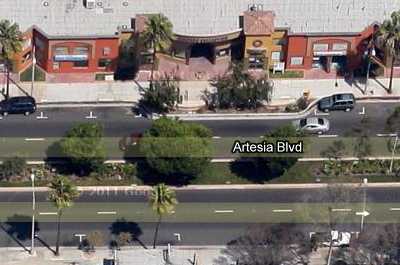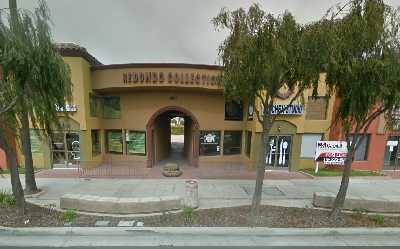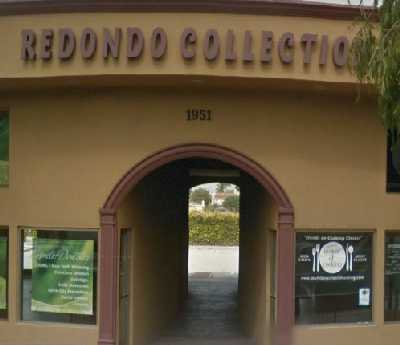The current issue of PEQ (vol. 143, #2, July 2011) arrived this past week. Although some articles in recent issues have interested me to one degree or another, & I've been wanting to blog about them, this one is exceptional due to several articles related to royalty.
Philip Davies leads off with an "Editorial: Mysterious Books from Jordan" regarding the allegedly Christian lead codices (plates, most of which are bound in codex form). In a previous blog post ("Hello Helios"), I discussed one of the images resembling Rhodian coins with artwork based on earlier numismatic images of King Alexander the Great. This PEQ contains 4 black-&-white images of the plates, 3 of which were widely publicized on the web, but another that I hadn't seen before. It bears a very modern-looking portrait of a bearded man, which Davies likens to "20th-century depictions of an Aryan Jesus." If it is ancient (which it's not), it would surpass the Turin Shroud in terms of realism & accuracy. Of course there's a simple explanation for these anomalies: the Shroud was not a medieval work of art, & this plate is a modern work of art (generously described as "hardly ancient" by Davies). Davies seems impressed by the metallurgical reports that support the antiquity/authenticity of the plates, but acknowledges "that there are some modern items here." (Davies emphasized the S-word in PEQ.)
The "Notes and News" section leads off with the now-old news of Anson Rainey's death back in February. Oddly, his TAU page does not mention it, & still lists his E-mail address. (Did the TAU faculty even know he was a professor emeritus?) The PEQ obituary resembles all the others I've read, which appropriately laud his remarkable academic accomplishments including this important reminder:
"His position on the Bible was somewhat traditionalist. Thus, Anson endorsed Lemaire's reading of bytdwd, 'House of David', on the Mesha stele, believing that both the Mesha and the Dan inscriptions related to the events recorded in the Bible with events in 853-851 BC, which included the battle in which Ahab, king of Israel, died fighting the army of the king of Damascus while his ally, Jehoshaphat, escaped unharmed, and the subsequent invasion of Moab, mentioned in 2 Kgs 3. He believed that the Biblical testimony to both events is reliable historically and chronologically." (Note that I'm pleased the editor used "BC" instead of "BCE" & capitalized "Biblically".)
Horton Harris, in "The Location of Ziklag: A Review of the Candidate Sites, Based on Biblical, Topographical, and Archaeological Evidence" briefly discusses an important LMLK site, Erani, though he doesn't actually discuss LMLKs. His section "4. Tell 'Areini as the Site of Gath" recounts the initial identification of it with Philistine Gath by (LMLK VIP) Albright, who referred to it as "Tell el-Mensiyeh". I was not aware of this name, so I added it to the list of alternate names on the LMLK Geography & Corpus pages. The other sites mentioned by Harris are Tell Khuweilfeh, Tell Shari'ah, Khirbet Zuheilikah, Tell Hesi, Tell Nejileh. The first 3 apply if Ziklag is located to the north, whereas the latter 2 plus Erani if it's in the south. It's interesting how Ziklag has a problem similar to the LMLK Socoh/Ziph dilemmas (no one can prove whether the seal inscriptions refer to the northern, southern, or neither location). And no, I'm not going to reveal which site(s) Harris believes to be the best candidate for Ziklag; it's complex, but interesting.
Messenger of fear in sight
Dark deception kills the light...
The main attraction in PEQ 143 belongs to Israel Finkelstein with "Tell el-Ful Revisited: The Assyrian and Hellenistic Periods (with a New Identification)" (pp. 106-18). The text spans 10-&-a-half pages with a half-page of notes & a nearly 2-page bibliography.
After an abstract & introduction, he presents the original interpretation of the excavation results based mostly on the work of Albright & the Lapps. Then he notes the conventional identification of el-Ful with Gibeah, beginning with Robinson in 1856 to Schniedewind in 2006, though noting that Miller & Arnold suggested Jaba.
Finkelstein then spends a page listing the problems related to the nature of the site & its excavation, primarily that it is atypical: a naturally high hill with shallow, unclear stratigraphy. He concludes this section in typical minimalist fashion, stating that "one cannot avoid mentioning the strong theological inclination of both Albright and P. Lapp, which dictated their interpretation of the finds." Like as if anyone can opine on the identification of a Biblical site sans theological inclination.
Of course by shining a spotlight on someone else's theological inclination, Finkelstein unwittingly broadcasts his own. Jumping ahead to his final section, two points he uses to argue against Ful being Gibeah makes this glaringly obvious:
"Assuming that the biblical narrative about a Saulide territorial entity in the highlands preserves a germ of history..."
"Even if the episode of Gibeah in Judges 20 preserves an early memory, it is quite clear that it was edited in the 6th century BCE, if not later."
Perceptive readers can see that Finkelstein's theological inclination dictates his belief that the Bible does not contain even a germ of history about King Saul, & does contain fiction built around a town named Gibeah that may or may not have existed prior to the Babylonian exile. By theologically "assuming" God didn't preserve this history, Finkelstein has edited it to suit his own theology. But I digress...
Backing up to the 5th section forming his core content for a "new history" (the very thing he projects onto the ancient writers!!!) for Tell el-Ful, he analyzes archeological data ascribed to each chronological phase: Iron I, Iron IIC, & Hellenistic, followed by a tabular summary:
Period A (11th-10th centuries BCE) = "Poor settlement"
Period B (early 7th to 597/587 BCE) = "Unfortified village, Assyrian 1st tower"
Period C (6th century BCE) = "Babylonian(?) phase of 1st tower"
Period D (latter 3rd - early 2nd BCE) = "Unfortified village, Seleucid(?) 2nd tower"
Out from ruins once possessed
Fallen city, living death...
Unlike other archeologists who have interpreted the early Iron Age remains of fortresses, Finkelstein refers to them as a mere "mirage ... since 90 percent of a building cannot evaporate without leaving any trace, we must conclude that there never was a large Iron I fortress at Tell el-Ful. Saul's headquarters is gone."
Over the past couple of months, an old house 2 blocks away from mine in Redondo Beach was entirely demolished because it was in such dilapidated condition. Bulldozers completely removed all traces of it in a day, & a new house has been built on the spot. This happens every day all over the world, thus disproving Finkelstein's argument. In ancient times, the exact same thing could easily have happened (except for the bulldozers of course). In fact, when it did, Finkelstein frequently makes the same argument, that because there are no remains of a place or a population, or an inscription of a person, they didn't exist. This philosophy, "absence of evidence is evidence of absence", has embarrassed scholars repeatedly, but some can't seem to learn the lesson because of their "strong theological inclination" that the Bible bears a hallmark of fiction rather than a revelation from God.
His basis for his Period B beginning in the early 7th century is based on something a little more substantial (from p. 111):
"Fourteen LMLK seal impressions were found at Tell el-Ful; those which can be identified belong to types dated by Lipschits et al. (2010) to the first half of the 7th century BCE (Lipschits et al. 2011). ... Yet, the early types of the LMLK seal impressions and private impressions on LMLK jar handles, which date to the late 8th century (Lipschits et al. 2010) have not been found thus far, and the quantity of what may be regarded as Iron IIB pottery is limited."
His 2010 publication reference is Tel Aviv 37, which I reviewed extensively in my Bible & Interpretation article last year (note that Finkelstein is unwittingly basing this portion of his argument on data & ideas I published back in 2004). The 2011 reference is Tel Aviv 38, "Judahite stamped and incised jar handles: A tool for studying the history of late monarchic Judah", which I was not aware of till now, so I'll have to pursue a copy. Here's a link to my Gibeah statistics to better understand the basis of his statement; only 4 identifiable stamps have been published; 7 remain unpublished.
Finkelstein suggests that Assyrians built the tower as 1 of several administrative forts including Ramat Rahel. To his credit, he bases this on an Assyrian-style revetment at el-Ful, but he still has no explanation for the Judean jars being there (including Circles & Rosettes spanning the period he believes it was used by the Assyrians) as I pointed out in my rebuttal to Lipschits et al.
Despite the long list of esteemed scholars who have supported it, after describing the identification of Gibeah with el-Ful as "highly questionable, probably impossible", Finkelstein gives his own "admittedly speculative" speculation based on the 1Maccabees 9:50-2 list of Seleucid fortifications, & using a process of elimination to arrive at Pharathon, dismisses its identification with Farkha & Khirbet el-Fire by other scholars since those "sites are all outside the boundaries of Judea", as well as Khirbet Ein Fara northeast of Jerusalem because "the finds at the site do not support this proposal." Hence, he equates Pharathon in 1Mac with the Valley of Pheretae/Paran in Josephus (War 4, 9, 4) & Perath in Jeremiah 13:4, & Parah in Joshua 18:23.
Earlier, Finkelstein listed the absence of Gibeah in Joshua 18:21-8 as evidence for it not being el-Ful; as for the possibility that "Gibeath" in verse 28 might be Gibeah, in a footnote he joins some other scholars who read it as "Gibeath Kiriath[-jearim]" (1 place) instead of "Gibeath, Kiriath" (2 places).
So instead of identifying the naturally high hill of el-Full with Gibeah, a name that means "hill" in Hebrew; he identifies it with Parah, which means "young cow" in Hebrew. (Right now I'm wondering what the Hebrew word for "bull" is ... probably a cognate of the Arabic name for the site, which means "mound of beans"...)
By the way, how could the writer of 1Mac know more about the archeological content at el-Ful, & hence, be a more reliable source of its occupation & name than the writer of Joshua? Didn't both of those writers possess the evil thing that should not be: "strong theological inclinations"?
G.M. Grena
Sunday, August 14, 2011
Sunday, August 07, 2011
Newsflash: Another Redondo Collection!
It's no big secret that I own an important collection of LMLK jar handles, & that I live in Redondo Beach, California.
When I began constructing the LMLK Research Website almost a decade ago, I decided to list mine in the Corpus page as simply a "private collection in Redondo Beach" rather than "The Grena collection". I thought it was a little confusing that Vaughn listed Steve Adler twice in his 1999 corpus, once by himself with 12 handles, & 17 others jointly (?) with William Stern; see also 2 seemingly redundant listings for L. Alexander Wolfe (which I took the liberty of combining into a single quantity).
Way back then, I anticipated somebody else in my family possibly acquiring some, in which case it would be easier to distinguish them by location. The chances of that happening were extremely remote, but far more likely than the possibility of somebody else in the relatively small town of Redondo acquiring any sort of collection worth dubbing "Redondo Collection".
Lo & behold 1951 Artesia Blvd, Redondo Beach:



G.M. Grena
When I began constructing the LMLK Research Website almost a decade ago, I decided to list mine in the Corpus page as simply a "private collection in Redondo Beach" rather than "The Grena collection". I thought it was a little confusing that Vaughn listed Steve Adler twice in his 1999 corpus, once by himself with 12 handles, & 17 others jointly (?) with William Stern; see also 2 seemingly redundant listings for L. Alexander Wolfe (which I took the liberty of combining into a single quantity).
Way back then, I anticipated somebody else in my family possibly acquiring some, in which case it would be easier to distinguish them by location. The chances of that happening were extremely remote, but far more likely than the possibility of somebody else in the relatively small town of Redondo acquiring any sort of collection worth dubbing "Redondo Collection".
Lo & behold 1951 Artesia Blvd, Redondo Beach:



G.M. Grena
Subscribe to:
Posts (Atom)
